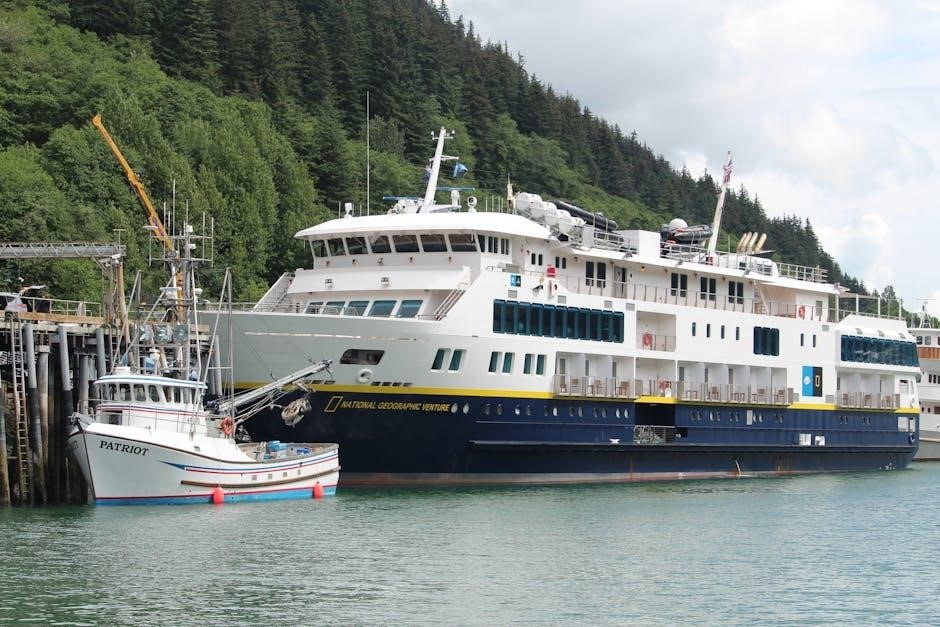Self-guided fishing in Alaska offers an unparalleled adventure, allowing anglers to explore vast wilderness, abundant wildlife, and pristine waters teeming with iconic species like salmon and trout.
1.1 What is Self-Guided Fishing?
Self-guided fishing in Alaska is an independent adventure where anglers plan and execute their own trips without hiring a guide or joining a tour group. It offers the freedom to explore Alaska’s vast wilderness and pristine waters at one’s own pace. While it can be challenging due to the need for extensive planning and knowledge of local regulations, it is particularly appealing to experienced anglers seeking solitude and cost savings. Self-guided fishing allows individuals to target various species like salmon and trout, provided they have the necessary gear and understanding of the region. Despite the complexities of logistics and preparation, it promises an unforgettable experience in one of Earth’s most breathtaking landscapes.
1.2 Why Choose Alaska for Self-Guided Fishing?
Alaska is a paradise for self-guided fishing enthusiasts, offering untouched wilderness, abundant wildlife, and some of the most pristine fishing waters on Earth. The state’s remote locations provide anglers with a true sense of adventure and independence. With its vast and diverse fishing spots, Alaska allows anglers to explore a variety of environments, from rivers and lakes to coastal areas. The opportunity to connect with nature in such a pure and unspoiled setting is unparalleled. For those seeking a unique and memorable fishing experience, Alaska stands out as a top destination, offering a chance to immerse oneself in its breathtaking natural beauty and create lasting memories.
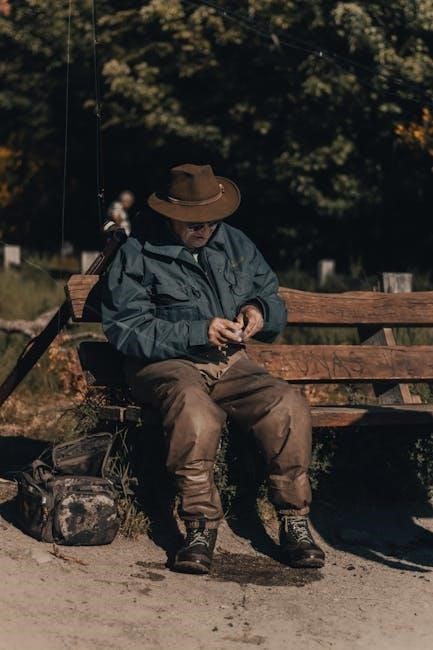
Understanding Alaska’s Fishing Scene
Alaska’s fishing scene is renowned for its untouched waters, diverse fish habitats, and abundant marine life, making it a unique destination for anglers seeking unforgettable experiences.
2.1 Popular Fish Species in Alaska
Alaska is home to an impressive variety of fish species, attracting anglers worldwide. Salmon, including Chinook, Sockeye, Coho, and Pink, are among the most sought-after. Trout, such as Rainbow and Dolly Varden, also thrive in the state’s pristine rivers and streams. Halibut and lingcod are popular for saltwater anglers, while Arctic char and grayling add to the diversity. Each species offers unique fishing opportunities, with specific habitats and seasons. Understanding these species and their behaviors is key to a successful fishing experience in Alaska’s vast wilderness.
2.2 Best Fishing Seasons in Alaska
Alaska’s fishing seasons vary depending on the species and region, but peak opportunities often occur during summer and early fall. King salmon fishing typically runs from May to July, while silver and sockeye salmon peak in July and August; Halibut fishing remains consistent throughout the summer months, and trout fishing is ideal from June to September. In the Arctic, species like char and grayling are accessible during the short summer season. Winter offers ice fishing opportunities for species like burbot and northern pike. Timing your trip according to the season ensures a productive and memorable fishing experience in Alaska’s diverse fisheries.
2.3 Key Fishing Locations Across Alaska
Alaska offers a diverse array of fishing locations, each with unique opportunities. Bristol Bay is renowned for its salmon runs, particularly sockeye and king salmon. The Kenai River is famous for its trophy-sized trout and salmon, attracting anglers worldwide. In southeastern Alaska, the Inside Passage and destinations like Juneau provide access to both freshwater and saltwater species, including halibut and lingcod. The Matanuska-Susitna Valley and Copper River are known for their salmon and trout, while the Arctic region offers chances to catch char, grayling, and Dolly Varden. Locations like Kotzebue and Utqiagvik provide unique opportunities for northern species. Each location offers a distinct fishing experience, catering to both novice and experienced anglers.
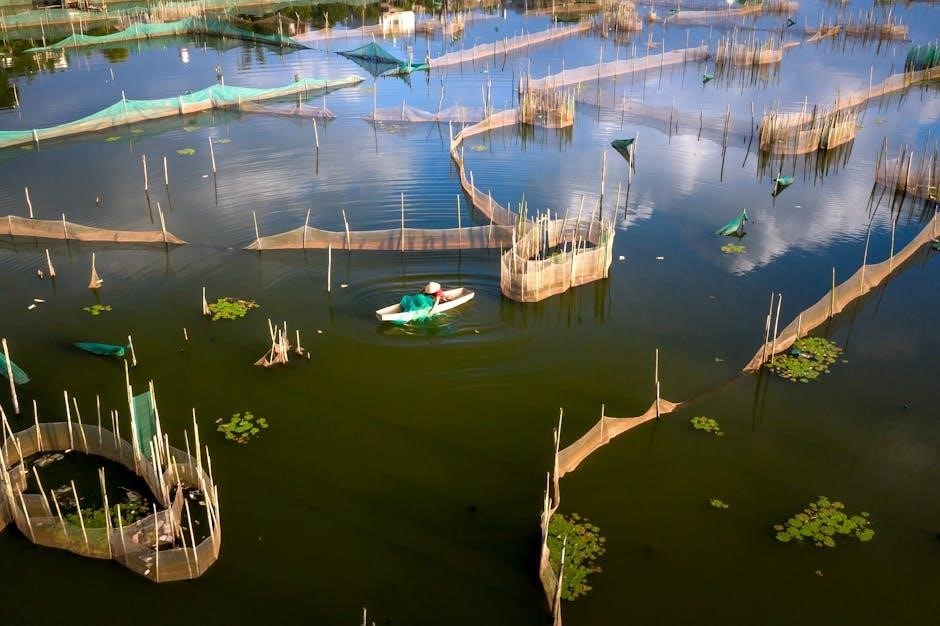
Planning Your Self-Guided Fishing Trip
Planning a self-guided fishing trip in Alaska involves setting clear goals, researching locations, understanding local regulations, and preparing the right gear for a successful adventure.
3.1 Choosing the Right Location
Choosing the right location for your self-guided fishing trip in Alaska is crucial for success. Consider the species you’re targeting, as different fish thrive in specific regions. Salmon, for instance, are abundant in rivers like the Kenai and Kasilof, while halibut and trout are found in coastal areas and lakes. Seasonal timing is also key, as fish migrations vary by location and month. Assess your skill level and accessibility needs—some spots are remote and require advanced planning, while others are more accessible. Research local guides, maps, and online forums to gain insights. Ensure the location aligns with your gear and permits, and respect environmental regulations to preserve Alaska’s pristine fishing grounds.
3.2 Obtaining Necessary Permits and Licenses
Before embarking on your self-guided fishing adventure in Alaska, securing the proper permits and licenses is essential. Both residents and non-residents require a valid sport fishing license, which can be obtained through the Alaska Department of Fish and Game. Additional permits may be needed for specific species, such as king salmon, or for fishing in certain areas. Ensure you understand local regulations, including daily catch limits and gear restrictions. Licenses can be purchased online or in-person at local vendors. Failure to obtain the correct documentation can result in fines or confiscation of gear. Always carry your license and permit with you while fishing to avoid complications.
3.3 Planning for Safety and Emergency Preparedness
Planning for safety is crucial when embarking on a self-guided fishing trip in Alaska. Always inform someone of your itinerary, including where you’ll be fishing and when you plan to return. Pack a emergency kit with essentials like a first aid kit, flashlight, extra batteries, and a multi-tool. Bring a reliable means of communication, such as a satellite phone or a personal locator beacon (PLB), especially in remote areas with no cell service; Be prepared for unpredictable weather by carrying waterproof gear and warm clothing. Familiarize yourself with the area and potential hazards like strong currents or wildlife encounters. Never underestimate the power of nature in Alaska—stay vigilant, assess risks, and be ready to adapt your plans if conditions change. Stay informed about local weather forecasts and any safety advisories before heading out.
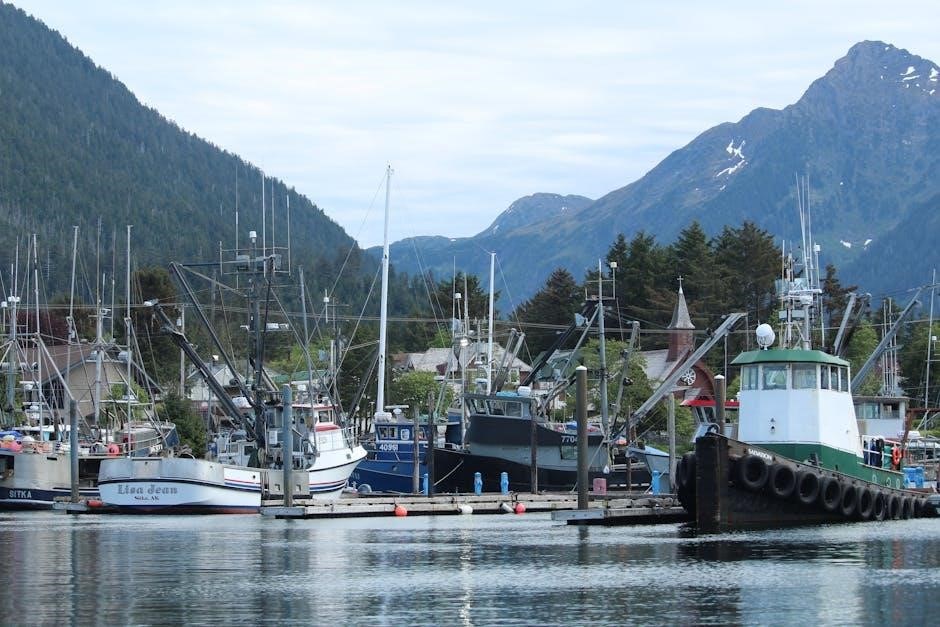
Gear and Equipment for Self-Guided Fishing
Having the right gear is essential for a successful self-guided fishing trip in Alaska. Invest in durable rods, reels, and tackle suitable for the species you’re targeting. Consider waders, nets, and storage solutions to keep your equipment organized. Don’t forget to pack extra line, lures, and hooks, as well as a first-class tackle box. Choose gear that withstands Alaska’s rugged conditions, and ensure it’s lightweight enough for easy transport. Quality equipment will enhance your fishing experience and help you make the most of your adventure.
4.1 Essential Fishing Gear
For a successful self-guided fishing trip in Alaska, it’s crucial to have the right gear. Start with a sturdy, high-quality fishing rod and reel combo designed for the species you’re targeting. Choose a line strength that matches the fish you’re after, whether it’s lightweight for trout or heavy-duty for halibut. Pack an assortment of lures, such as spinners for salmon and jigs for halibut, along with live or artificial bait. Don’t forget essential accessories like hooks, sinkers, and swivels. A reliable net is a must for landing fish, and waders or waterproof boots are necessary for wading in rivers; Bring a tackle box to keep everything organized, and consider a multi-tool or pliers for hook removal. Finally, a fishing knife and first-aid kit are practical additions for any fishing adventure.
4.2 Recommended Clothing and Accessories
When self-guided fishing in Alaska, proper clothing and accessories are vital to stay comfortable in the state’s rugged and unpredictable climate. Start with a moisture-wicking base layer, followed by insulating fleece or wool, and finish with a waterproof and breathable outer layer. Waterproof pants and sturdy, waterproof boots with good traction are essential for wading in rivers or icy shores. Bring a warm hat, gloves (or fingerless gloves for casting dexterity), and consider a neck gaiter or balaclava for added warmth. Polarized sunglasses reduce glare, while a buffs or face mask protects against wind and sun. Don’t forget a personal flotation device (PFD) for safety, insect repellent, and sunscreen for protection from the elements. A small first-aid kit is also a practical addition to your gear.
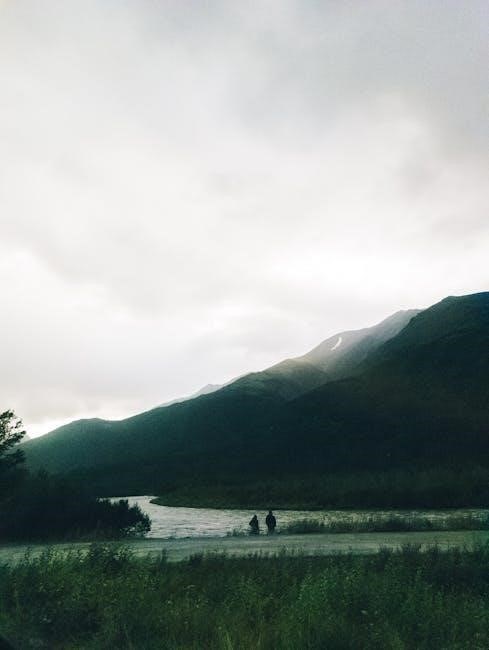
Techniques and Strategies for Success
Mastering effective techniques and strategies is crucial for a successful self-guided fishing trip in Alaska. Understanding local methods and adapting to varying conditions ensures a memorable experience.
5.1 Understanding Local Fishing Techniques
Understanding local fishing techniques is essential for success in Alaska. Techniques vary by species and water type, with methods like fly fishing, trolling, and bottom fishing being popular. For salmon, try streamer flies or lures that mimic their natural prey. Trout often respond to dry flies or nymphs, while halibut fishing requires heavy tackle and bottom rigs. Researching the specific methods used by locals for your target species will significantly improve your chances. Additionally, paying attention to water conditions and fish behavior can help you adapt your approach. Local tackle shops and fishing guides are valuable resources for learning these techniques and selecting the right gear.
5.2 Reading Water and Identifying Fish Habitats
Reading water and identifying fish habitats are critical skills for self-guided anglers in Alaska. Fish often thrive in specific water structures, such as eddies, riffles, and drop-offs, where food and cover are abundant. Rivers and streams may hide trout or Dolly Varden behind boulders or in deep pools, while lakes often feature structure like weed beds or sunken logs. Understanding how light, current, and season affect fish behavior helps pinpoint their locations. Salmon, for example, tend to congregate in shallow gravel beds during spawning. By observing water clarity, depth, and flow, anglers can better locate their target species, increasing their chances of a successful catch.
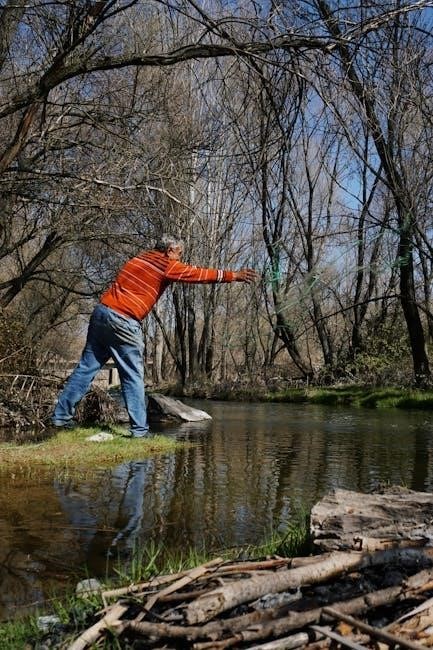
Tips for a Successful Self-Guided Fishing Trip
Thorough preparation and understanding your gear are essential for a successful self-guided fishing trip in Alaska. Stay observant and adaptable to maximize your experience.
6.1 Importance of Research and Local Knowledge
Researching local conditions, fishing techniques, and regulations is vital for a successful self-guided fishing trip in Alaska. Understanding the behavior of fish species, such as salmon or trout, and their habitats ensures better chances of success. Additionally, gaining insights from local anglers, fishing reports, and online forums provides valuable information about hotspots and seasonal patterns. Familiarizing yourself with maps and terrain helps navigate remote areas effectively. Local knowledge also aids in avoiding potential hazards like strong currents or wildlife encounters. By thoroughly researching and leveraging local expertise, anglers can make informed decisions, enhancing both safety and the overall fishing experience in Alaska’s vast wilderness.
6;2 Respecting the Environment and Local Regulations
Respecting Alaska’s environment and adhering to local regulations is essential for preserving its pristine ecosystems and ensuring sustainable fishing practices. Anglers must follow catch-and-release guidelines, handle fish gently, and avoid littering to protect wildlife habitats. Familiarizing yourself with local fishing laws, including gear restrictions and closed areas, helps maintain fish populations and their habitats. Additionally, respecting private property and culturally sensitive areas is crucial. By adhering to these practices, anglers contribute to the conservation of Alaska’s natural resources, ensuring that future generations can also enjoy its incredible fishing opportunities. Responsible fishing not only protects the environment but also fosters a positive relationship with local communities and their traditions.
6.3 Staying Flexible and Adaptable
Staying flexible and adaptable is crucial for a successful self-guided fishing trip in Alaska. Weather conditions, fish activity, and access to locations can change rapidly, requiring anglers to adjust plans accordingly. Being open to exploring new spots or trying different techniques can lead to unexpected opportunities. Flexibility also means being prepared for variable fishing conditions, such as switching gear or strategies based on the situation. Additionally, adapting to local advice and insights from other anglers or guides can significantly enhance your experience. By remaining adaptable, you can make the most of your time on the water and enjoy the unique challenges and rewards that Alaska offers.
Self-guided fishing in Alaska is an unforgettable journey, offering thrilling adventures, pristine landscapes, and abundant fish species. With proper planning and adaptability, anglers can experience the ultimate fishing escape.
7.1 Final Thoughts on Self-Guided Fishing in Alaska
Self-guided fishing in Alaska is a rewarding and unforgettable experience, offering anglers the chance to connect with nature and test their skills in untouched wilderness. With its diverse fish species, breathtaking landscapes, and abundant waterways, Alaska provides endless opportunities for adventure. While it requires careful planning and a willingness to adapt, the freedom to explore at your own pace makes it incredibly fulfilling. Always respect local regulations and the environment to ensure sustainable fishing practices. Whether you’re a seasoned angler or a first-timer, self-guided fishing in Alaska promises unforgettable memories and the thrill of reeling in iconic species like salmon and trout.
